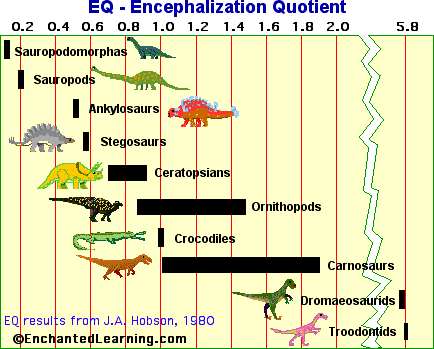Advertisement.
EnchantedLearning.com is a user-supported site.
As a bonus, site members have access to a banner-ad-free version of the site, with print-friendly pages.
Click here to learn more.
(Already a member? Click here.)
ANATOMY
Sauropelta was an armored dinosaur from the early Cretaceous period. It looked a lot like its more advanced relative Ankylosaurus, but didn't have the bony nodes at the end of its tail or horns on its head.
It was about 25 feet (7.6 m) long and weighed over 3 tons. It had a narrow skull with massive jaws, small, leaf-shaped cheek teeth and a toothless horny beak. It had horn-covered plates embedded in its skin all over its body (except on its underbelly). Its entire top side was heavily protected from carnivores. Only its under-belly was unplated. Flipping it over was the only way to wound it.
WHEN SAUROPELTA LIVED
Sauropelta lived during the early Cretaceous Period, about 116-91 million years ago.
DIET
This huge, heavy reptile was an herbivore (it ate only plants). It had to eat a huge amount of low-lying plant material to sustain itself so its gut must have been very large. It probably had a fermentation compartment to aid in the digestion of the tough plant material, producing prodigious amounts of gas.
INTELLIGENCE
Sauropelta was an ankylosaur, whose intelligence (as measured by its relative brain to body weight, or EQ) was low among the dinosaurs.

LOCOMOTION
Ankylosaur trackways were found in 1996 near Sucre, Bolivia, South America showing that these huge creatures could run at a "decent jog," according to Christian Meyer, a Swiss paleontologist working at the site. Speed estimates are made using the distance between the footprints, the animal's leg length, the pattern of the tracks, and other factors.
DISCOVERY OF FOSSILS
 Fossils have been found in Montana, USA. Sauropelta was discovered and named by John H. Ostrom and Grant E. Meyer in 1970.
Fossils have been found in Montana, USA. Sauropelta was discovered and named by John H. Ostrom and Grant E. Meyer in 1970.
CLASSIFICATION
Sauropelta belonged to the Order Ornithischia, the Suborder Thyreophora (Enoplosauria), the Ankylosauria (armored, four-legged dinosaurs), and was in the family Nodosauridae (a group of primitive ankylosaurs with no tail clubs; it included Hylaeosaurus, Edmontonia, Sauropelta, Acanthopholis, Silvisaurus, Nodosaurus, Panoplosaurus, etc.).
 Information Sheets About Dinosaurs Information Sheets About Dinosaurs
(and Other Prehistoric Creatures) |
Just click on an animal's name to go to that information sheet. If the dinosaur you're interested in isn't here, check the Dinosaur Dictionary or the list of Dinosaur Genera. Names with an asterisk (*) were not dinosaurs.
How to write a great dinosaur report.
For dinosaur printouts, click here.For brief dinosaur fact sheets, click here.
Enchanted Learning®
Over 35,000 Web Pages
Sample Pages for Prospective Subscribers, or click below
Click to read our Privacy Policy
Enchanted Learning Search
|
Search the Enchanted Learning website for:
|
Advertisement.
Advertisement.
Copyright ©1996-2018
EnchantedLearning.com ------ How to cite a web page


